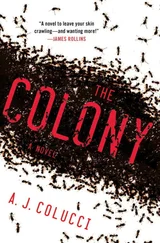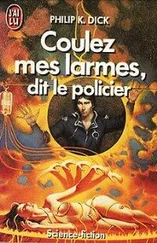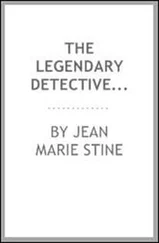The mightier the wind, the deeper the roots, Isabelle had told him.
Then the trees were spinning around in a circle, a different game, ring-around-the-rosy, and it made Sean dizzy. His arm jerked to one side and he fell off the log. Then his head began to hurt. He tried to kneel, but sitting was all he could manage and even then he felt loopy. Instinctively, he shut his eyes and took deep breaths and gradually the earth came to rest and his headache subsided.
Slowly, he rose to his feet, still scared and worried about being lost. What if he never found his way back? He could die out here, starve or freeze to death, couldn’t he?
Then a small sound blew by his ear, riding on a thin current of air—
Sean .
He spun around, his heart pounding fast.
Leggo, Sean.
He heard it again, but there was no one around. A small laugh drifted past him and then he heard it calling again—
Leggo.
He started to panic, turning in circles and looking for a small person, but there were only trees. He wondered if the voice was inside or outside his head, or perhaps it had something to do with the accident. It was a new, terrible thing to think about.
Sean .
This time the voice was behind him, chillingly close, and Sean spun on his heels.
All he saw was a hemlock.
For a moment, he stood silently staring at the small tree, and he had the feeling it was looking right back at him. He stepped closer. The tree was so comforting and familiar, Sean wasn’t afraid anymore. He reached out to pinch a branch and slid it between his fingers, watching the needles spring back into shape. For some reason, it bothered him to see the underside of the pine needles speckled with the same black spots as the ivy on the cliff. It left purple dust on his fingertips. Dr. Beecher had called it a fungus.
Moving closer, he saw there was more fungus on the tree trunk, blotchy like a rash. It traveled along the bark to the ground, where it was growing like moss, and across a fat root sticking out of the dirt. It crept over a straggly berry bush and some pinecones. It climbed up the trunks of cedars and covered the leafy vines that hugged their trunks. The fungus seemed to be everywhere.
Why hadn’t he noticed it before? He squinted at the woods. The black spots weren’t visible if you weren’t looking for them. Blotches fell into patterns of bark and inside crevices as if it were camouflaging itself. Even against the white birch it seemed like nothing more than cracks and shadows. Sean continued his examination and found there wasn’t a single plant not infected. He wondered if it was contagious, like when Luke got the flu and passed it to everyone in the family.
He moved through the woods, snapping off leaves and branches, stuffing them into his pockets. Before long, he reached the path, without realizing he was ever lost. Sean headed back to the house. He forgot all about the voice in the wind.
JULES WAS IN THE LAB, engrossed in research, and didn’t hear the glass doors slide open or the squeak of muddy sneakers behind him.
He’d already pieced together that V-waves were a force of nature constantly present in plants but never before detected, standing waves that could travel at the speed of up to 64 centimeters per second through live plants and up to 1.24 meters per second through air; too slow to be electromagnetic waves. The jagged lines on the strip chart showed that the force of impact on the tree was immediate, severe, and semipermanent.
But Jules was baffled by George’s claim that the plants were able to change their frequency and communicate with humans on a cognitive level. He looked at the books piled up in front of him. He picked up Achieving Brain Entrainment Through Isochronic Tones and flipped through the text, much of it highlighted in yellow marker.
He knew that brain entrainment, also called brain synchronization, was supposed to be a way to achieve various states of consciousness. The idea was to create a “frequency following” response, changing the oscillations of the brain by playing various sounds. This was possible because the human brain has a tendency to follow the frequency of the most dominant external stimulus. It had become popular in the sixties as a form of meditation and there were even claims that it enhanced the power of ESP or telepathy.
“ Christ, ” Jules muttered, shaking his head.
He sat back and raked his fingers through his hair. None of this mattered to him. It was like picking though a garbage heap trying to find a small diamond that might have been dropped. It was all ridiculous science, but not surprising. When George wasn’t working on a serious project, he was getting high on drugs, meditating, or involved in things like channeling spirits. So for Jules it was frustrating, but not particularly odd to learn of George’s attempts to entangle the thoughts of plants and humans.
Damn fool .
He couldn’t stand the idea of his mentor ending his brilliant career as a bad joke, a charlatan, a drug addict. He pictured his friend in a hazy stupor walking through the woods, yelling at the trees and firing his rifle at passing boats. The thought made him nauseous. This was a man he had worshipped, and he had hoped to someday fill his shoes. If only there was some truth to the claims George made, even the smallest contribution to science would give him a semblance of legacy.
“Ung!” Sean tugged on his sleeve.
Jules snapped the textbook closed. “Sean, you startled me.”
The boy handed him a pine needle branch.
Jules held it in his fingers, noticing the fungus. “Where did you get this?”
Sean sunk his hands in his pockets.
“Where did you get this?” Jules repeated, more insistent.
Sean lifted his fists over his head and made a shower of grass, leaves, and pinecones.
Jules was quick to capture whatever he could. He looked down at the specimens, all speckled with the black growth, and he turned to Sean with dark eyes.
“Show me,” he said.
They walked briskly from the house to the yard, and Sean pointed everywhere.
Jules swept through the ryegrass that reached his waist and grabbed a fistful of stalks, examining them close. Specks of black covered the grain. He trudged quickly across the field with Sean, backhanding the grass and finding every blade infected. He stopped for a closer look. Most of the fungus was soft and fluid, but there were tiny shoots of a purplish growth protruding from the floral structure like minigrains of rice.
Some of the fruiting bodies beneath his fingertip dropped to the ground, where he saw other tiny pods. He looked at his fingers, brushed with purple spores, and it reminded him of something. The rye… the rye…
Ergot, he thought and pressed the grass to his chest. This is ergot.
For a moment he was speechless and unable to move, but then suddenly he took off toward the woods with Sean trying to keep up. As he reached the path, Jules stepped up to a large maple. He ran his hand over the fungus-covered bark and his palm streaked purple.
“It can’t be,” he whispered.
He walked farther down the path, his eyes shifting over the endless infestation of the trees. It was on ferns and bushes, vines and weeds. He looked back at the house with widened eyes and said, “Impossible.”
* * *
It was late afternoon and Luke followed Monica down the beach, trying to keep up with her manic pace. She did a cartwheel that barely broke her stride as she ran toward the ocean, kicking up black sand. She was in high spirits for a change.
Luke felt tired and irritable, like a dog that chased its tail too long before realizing its efforts had all been futile.
Читать дальше












